Since the advent of printing, posters have been created to inform the public of what they must do (sometimes on pain of death) in response to outbreaks of plague or other infectious diseases. The AIDS public health poster campaign chose print even in the internet age and dealt with issues of identity and behaviour like never before.
AIDS awareness posters from the 1980s onwards
Words by Russell Dornan
- In pictures
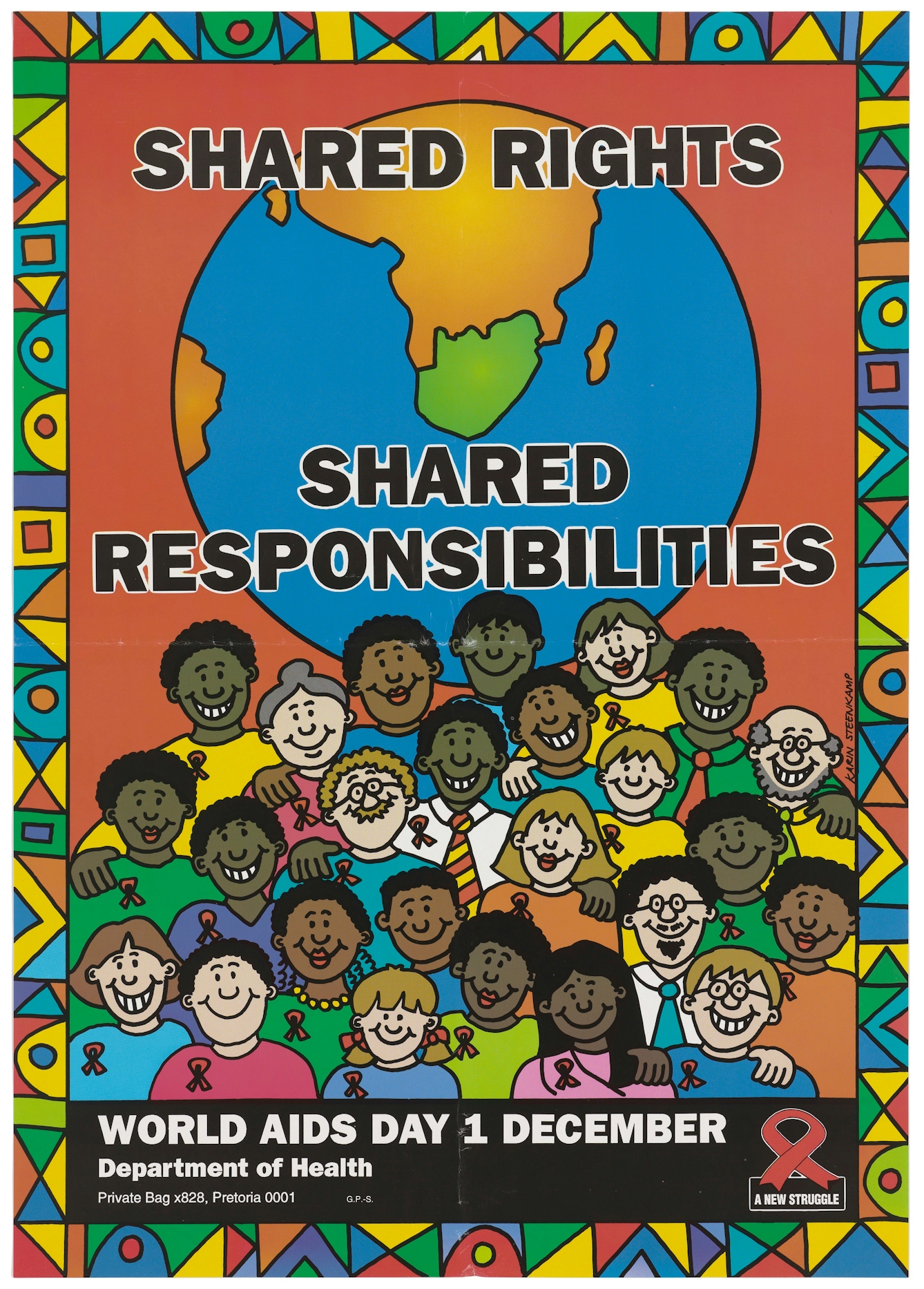
Apart from major epidemics, war is the crisis which tends to elicit the most public health posters: in both World War I and World War II many posters were produced to save the soldiers from syphilis and typhoid, and to encourage the population to keep fit for fighting. In peacetime, the 20th century saw a decline in the public health poster, until the AIDS outbreak in 1981 bucked the trend.
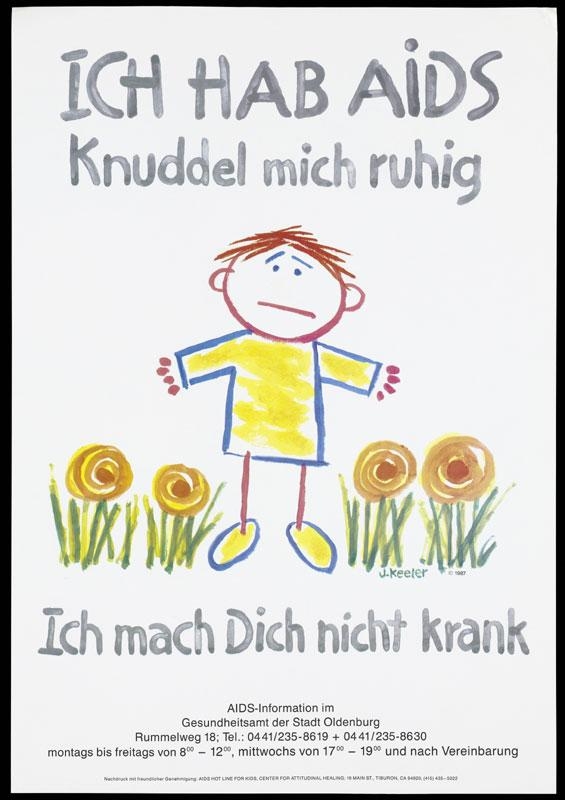
Local authorities, health providers and even central governments reverted to the practices of their parents and grandparents in the 1940s and commissioned new designs to protect people from the new disease, AIDS. Officials who never thought they would be involved in such activities found themselves in advertising offices and artists' studios approving designs for multi-million pound publicity campaigns.
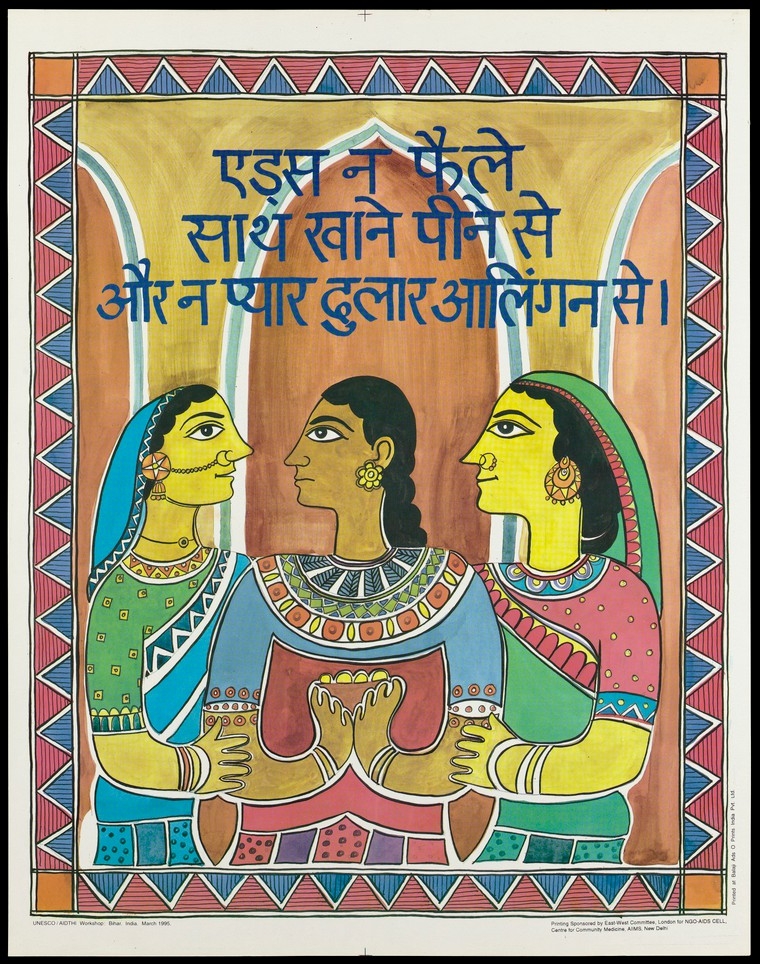
These campaigns continued for over 20 years, and in some parts of the world are still going strong in the second decade of the 21st century. This reversion to an earlier way of doing things is perhaps all the more surprising because the decades in which the AIDS poster campaigns have flourished were the very decades in which the internet was introduced, browsers were created, and billions of web pages were published.
![A large pink condom with a message in white lettering against a blue background associating condoms to 'pocket life-insurance'; French version of a series of 'Stop SIDA' [Stop AIDS] campaign posters by the Federal Office of Public Health, in collaboration with the l'Aide Suisse contre le SIDA. Colour lithograph.](https://images.prismic.io/wellcomecollection%2Ff8dfa7a8-4fca-42f8-b9e0-0b711be0cd9e_default.jpg?w=1338&auto=compress%2Cformat&rect=&q=100)
Many a campaign was accompanied by the warning "this will be our last poster campaign - in future everyone will get their information from the web". There was plenty of electronic campaigning, especially through the 'Stop AIDS' campaign, with its ubiquitous pink condom.
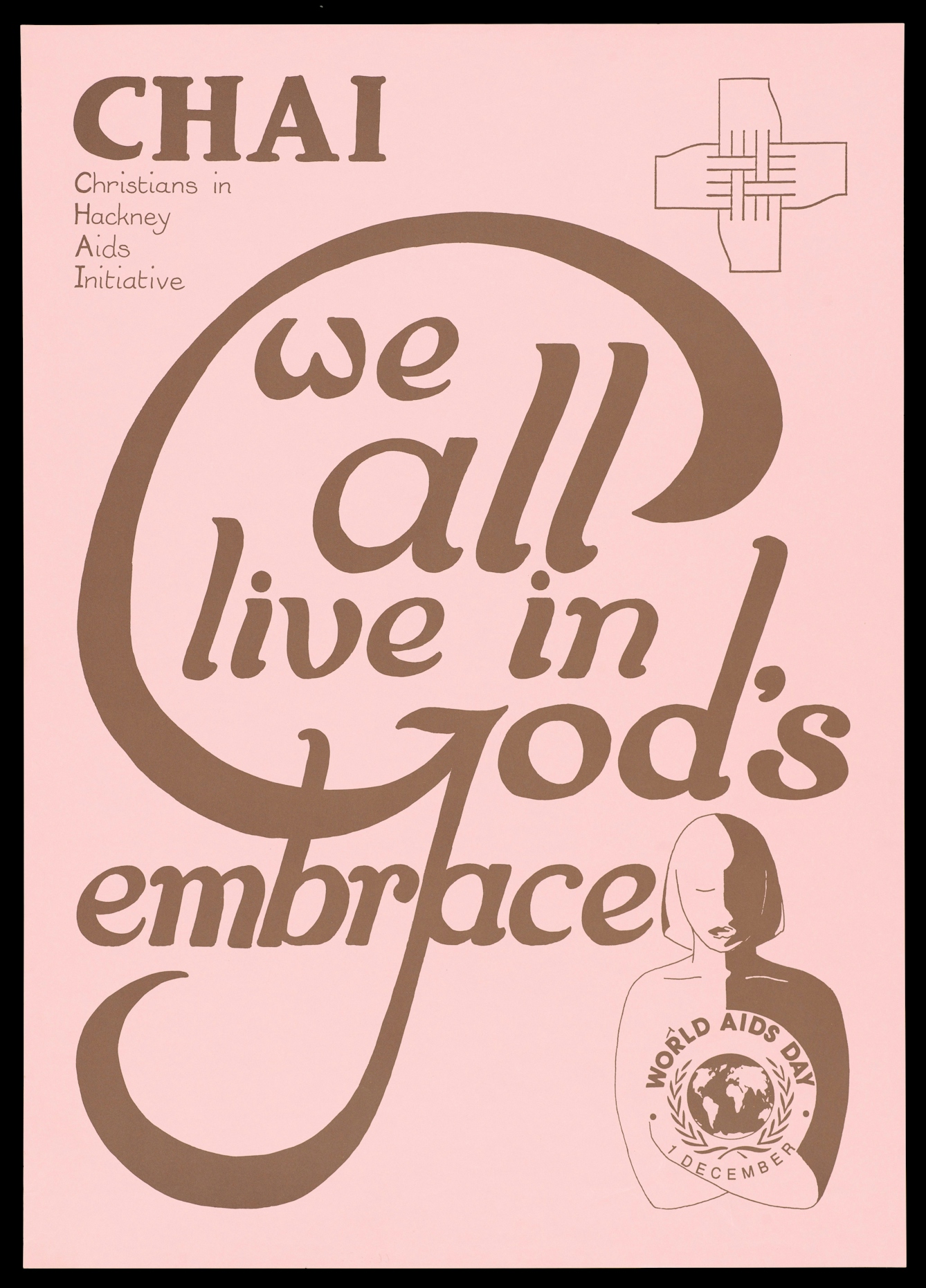
But paper posters continued because of their greater presence, durability and immediacy in the real world of the street, the nightclub and the support group.

One distinct feature of these posters is the fragmented target audience: there are AIDS posters pinpointed at groups such as black teenagers, Canadian speakers of Chinese, the middle-aged and middle-class students taking recreational drugs and lesbian mothers.
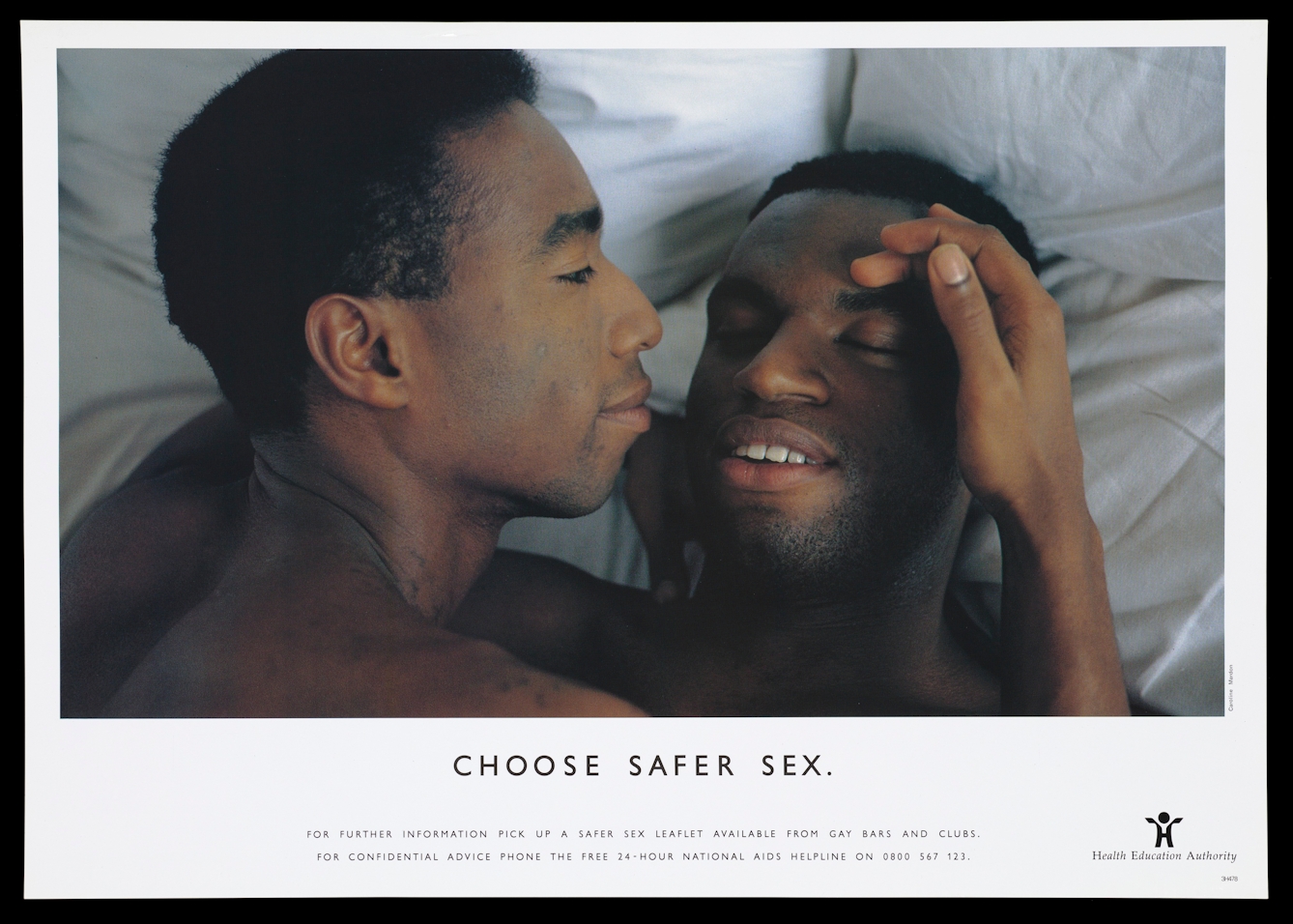
The AIDS posters speak to a world driven by the fissures defining thousands of identity groups. The marketing professionals who produced them, especially in the USA, had been trained to focus on targeted groups identified in United States presidential campaigns and in commercial advertising.

Another noticeable feature is the apparent change in notions of propriety. At least one government of the time allowed itself to be associated with a return to 'Victorian values' nevertheless, during the same period it became commonplace to see condoms depicted, praised and affectionately caricatured on street posters.
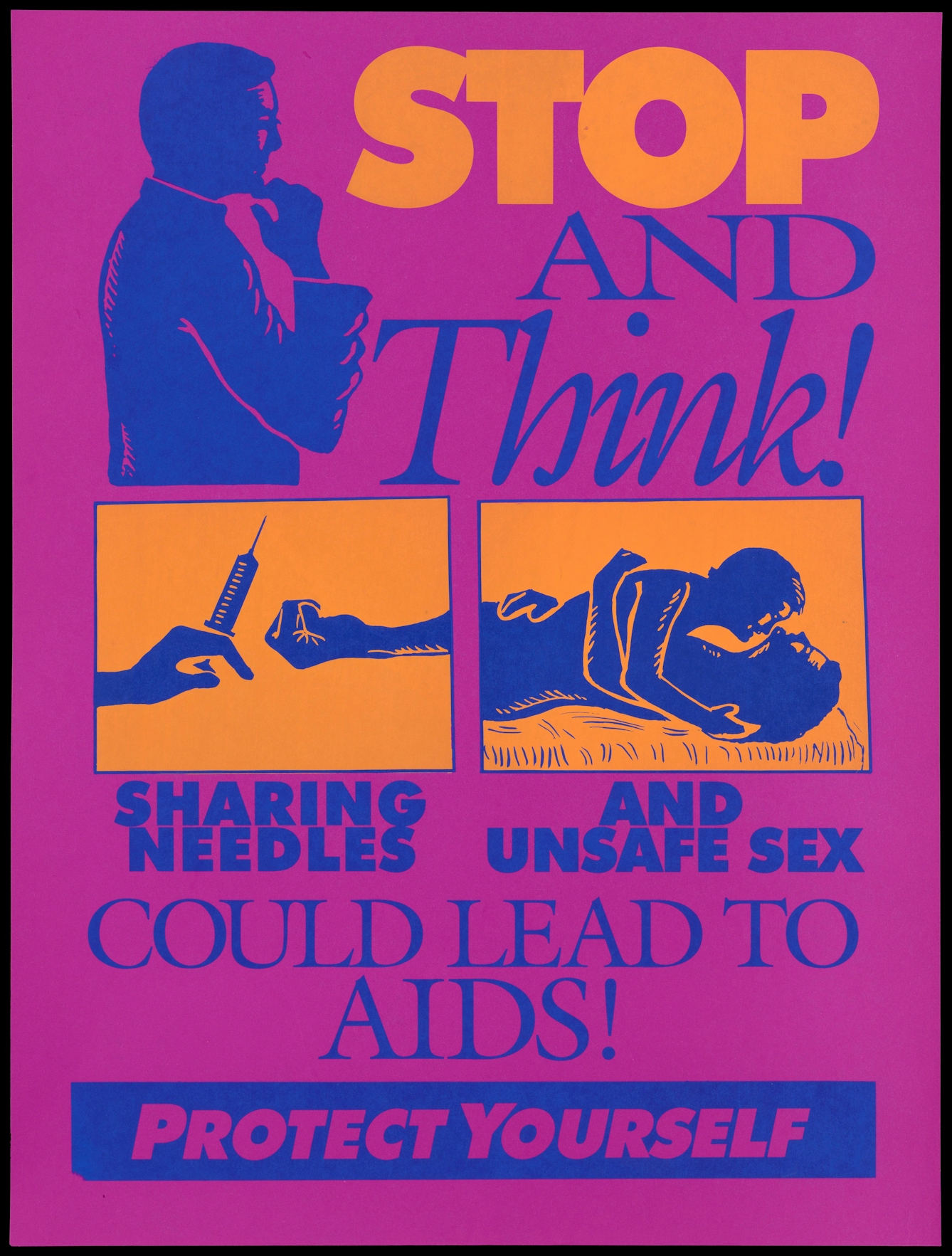
Some posters were even more explicit, referring to such foci of disease as prostitution, heroin injection and forms of gay sex, which many people will have previously known nothing about.

Some of the designers took a risk too far: a poster of the Washington Monument with a fluorescent condom on it was never distributed. In many other cases, however, the imperatives of the potential epidemic over-ruled any considerations of taste or decorum.
